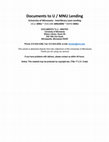Books by Paola Tartakoff
ARTICLES AND CHAPTERS by Paola Tartakoff

In the 1230s, Christian authorities prosecuted Norwich Jews on charges of having seized and circu... more In the 1230s, Christian authorities prosecuted Norwich Jews on charges of having seized and circumcised a five-year-old boy in an effort to convert him to Judaism. In the same decade, English chroniclers began to depict this case as an attempted ritual murder. According to Roger Wendover and Matthew Paris, Jews circumcised the boy with the intention of crucifying him at Easter. This article explores what the near simultaneous development of these two intriguing and seemingly disparate narratives suggests about thirteenth-century Christian perceptions and portrayals of circumcision. In so doing, it ushers research on medieval Christian attitudes toward circumcision into new spheres, deepens understandings of thirteenth-century Christian anxieties about conversion to Judaism, and brings to light a marginal note in the autograph copy of Matthew Paris' Chronica majora that may constitute evidence of evolving Christian views of the relationship between the bodies of Jews' alleged victims and the body of Christ.

Abstract On the basis of unpublished records from the diocesan archives of Barcelona and Girona, ... more Abstract On the basis of unpublished records from the diocesan archives of Barcelona and Girona, this essay explores why Jewish women converted to Christianity, what their alternatives were, and what happened following their baptisms in the environs of the Crown of Aragon during the century prior to the massacres and forced conversions of 1391. It suggests that Jewish women apostatized under two general sets of circumstances. Some went over to Christianity with their husbands or fathers, while others chose baptism in order to assert control over their individual fates, in defiance of communal norms. Among the latter group, some converted for love, and at least one woman threatened to apostatize in the hope of escaping an abusive husband. Following baptism, apostates often endured poverty and, when suspected of judaizing, they were prosecuted by ecclesiastical officials. The alternatives to baptism that all of these women contemplated, however, were also harsh. In examining how some medieval women negotiated the competing demands of their identities as daughters, wives, mothers, lovers, and Jews, this study also brings to light legal conundra to which apostasy gave rise and illustrates how varied and risky apostasy was in Iberia during the decades prior to 1391. Transcriptions of four documents follow the essay.

Between the twelfth and the fourteenth centuries, believing that Jews were not merely the archvil... more Between the twelfth and the fourteenth centuries, believing that Jews were not merely the archvillains in distant Christian history but an ongoing menace in the present, Christians in western Europe accused Jews of a litany of crimes. These alleged misdeeds included exploiting Christians financially, crucifying Christian children, stabbing consecrated eucharistic wafers and poisoning the water supply. They also included corrupting Christians spiritually-not only by instilling doubts in Christians about Christianity but also by "luring" Christians over to Jewish beliefs and practices. 1 Christians even charged Jews with seizing and circumcizing Christian boys in order to "make them Jewish." 2 The notion that Jews in high and late medieval western Europe would have recruited Christian converts to Judaism seems rather surprising, first and foremost on account of prevailing Jewish-Christian power dynamics. Although these were complex, there is no question that Jews lived at Christians' mercy. The church was at the height of its spiritual and temporal might, as it launched offensives against Christian dissenters at home and against Muslims in the Holy Land. Jews, by contrast, to quote from the Talmudic admonition to prospective converts to Judaism, had never been more "pained, oppressed, harassed, and afflicted." 3 Christians associated them with cruelty, greed, and filth. They burned Jewish books, and they massacred Jews and expelled them from one polity after another. It is difficult to imagine how, under these conditions, Jews could have wielded religious influence. 4 This chapter presents some preliminary observations about the interplay of fact and fantasy in high and late medieval Christian accusations to the effect that Jews actively proselytized. 5 I argue that several features of littleknown Christian conversions to Judaism in this period intensified Christian anxieties by suggesting that Christianity's victory over Judaism was still far from secure. I contend also that Christian perceptions of the Jewish facilitation of Christian conversions to Judaism and of the re-Judaization of Jewish apostates-which differed starkly from Jewish understandings of these matters-strengthened the Christian conviction that Jews were intent on bringing Christians over to Judaism. Through its joint consideration of
The accuracy of the Content should not be relied upon and should be independently verified with p... more The accuracy of the Content should not be relied upon and should be independently verified with primary sources of information. Taylor and Francis shall not be liable for any losses, actions, claims, proceedings, demands, costs, expenses, damages, and other liabilities whatsoever or howsoever caused arising directly or indirectly in connection with, in relation to or arising out of the use of the Content. This article may be used for research, teaching, and private study purposes. Any substantial or systematic reproduction, redistribution, reselling, loan, sub-licensing, systematic supply, or distribution in any form to anyone is expressly forbidden.
Book Reviews by Paola Tartakoff

we, the Polish state, in our archives, in the surviving documents, have evidence spread across ce... more we, the Polish state, in our archives, in the surviving documents, have evidence spread across centuries when Jews lived together with our Polish nation." 2 Guz appealed, thus, to the authority of the written word, and to its most sacred repository, the archives, to provide the irrefutable evidence that Jews had indeed practiced ritual murder in the past. He confirmed the veracity of his statements by turning to the "knowledge" accumulated and disseminated over the course of centuries, a knowledge that, as Teter argues in her book, made eradicating the blood libel very difficult. The paper trail in the Polish archives could be used to bear witness that Jews were put on trial and incriminated for the alleged murder of Christian children. To understand the dynamics at play in Guz's misappropriation of the written word, and to fully grasp the origin, evolution, and manipulation of the blood libel's narrative from the twelfth century to the eighteenth century in Christian Europe, one must read Teter's monumental book. And while it might be wishful thinking on my part to hope that Guz might become enlightened by reading Teter's words, Blood Libel elucidates for most of us the ways in which a paper trail of books, documents, tales, investigative records, reports, chronicles, and the images therein appended, spread, validated, and at times even served to counter, the false accusation of ritual murder against the Jews of Europe. It is the recorded words of political and religious leaders, of legal and medical experts, that made the story of Jewish infanticide so plausible, so real. However, in Teter's book, the written word does not take center stage alone. "Silences," as she writes in the epilogue, referring to the Holy See's refusal to publicly condemn ritual murder accusations against Jews, "are heard too." 3 At different times and places and for different reasons, royal and ecclesiastical authorities chose silence, thus ignoring the pleas of the Jewish communities that came under fire, torture, and death in the wake of a ritual murder accusation. By choosing silence, they not only corroborated the false accusations, but also became implicated in the crimes committed against the Jews falsely accused of infanticide. Although the Jews in Poland are presently not at risk of being put on trial or convicted of the false crime, the
Paola Tartakoff on Tamar Herzig ewish converts to Christianity have long evoked visceral response... more Paola Tartakoff on Tamar Herzig ewish converts to Christianity have long evoked visceral responses from Christians and Jews. Many Christians have viewed converts as representing the truth and triumph of Christianity. Many Jews, by contrast, have regarded converts as worthless, if not nefarious, traitors. Converts have also been a sensitive topic for historians, who often identify as Christians or Jews themselves. Until recently, historians rarely portrayed converts, especially pre-modern European converts, as three-dimensional individuals with unique stories of their own. Instead, historians long depicted converts either as undifferentiated victims of Christian violence or as lone male villains who went on to malign their former coreligionists. In the last two decades, scholars have begun to recognize the diversity of pre-modern Homosexuality and Jewish

Uploads
Books by Paola Tartakoff
ARTICLES AND CHAPTERS by Paola Tartakoff
Book Reviews by Paola Tartakoff